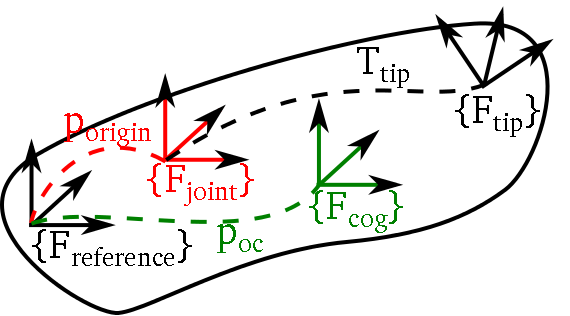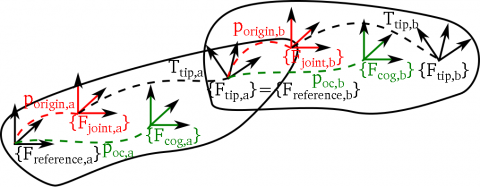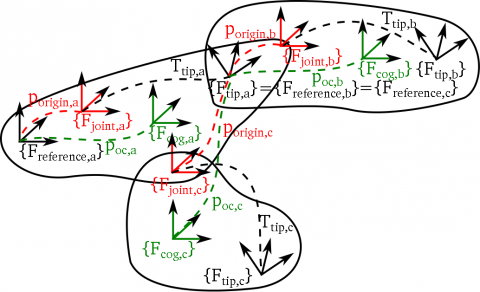Kinematic Trees
A KDL::Chain or KDL::Tree composes/consists of the concatenation of KDL::Segments. A KDL::Segment composes a KDL::Joint and KDL::RigidBodyInertia, and defines a reference and tip frame on the segment. The following figures show a KDL::Segment, KDL::Chain, and KDL::Tree, respectively. At the bottom of this page you'll find the links to a more detailed description.
 KDL segment
KDL segment
- Black: KDL::Segment:
- reference frame {F_reference} (implicitly defined by the definition of the other frames wrt. this frame)
- tip frame {F_tip}: frame from the end of the joint to the tip of the segment, default: Frame::Identity(). The transformation from the joint to the tip is denoted T_tip (in KDL directly represented by a KDL::Frame). In a kinematic chain or tree, a child segment is added to the parent segment's tip frame (tip frame of parent=reference frame of the child(ren)).
- composes a KDL::Joint (red) and a KDL::RigidBodyInertia (green)
- Red: KDL::Joint: single DOF joint around or along an axis of the joint frame {F_joint}. This joint frame has the same orientation as the the reference frame {F_reference} but can be offset wrt. this reference frame by the vector p_origin (default: no offset).
- Green: KDL::RigidBodyInertia: Cartesian space inertia matrix, the arguments are the mass, the vector from the reference frame {F_reference} to cog (p_cog) and the rotational inertia in the cog frame {F_cog}.
 KDL chain
KDL chain  KDL tree
KDL tree
Select your revision: (1.0.x is the released version, 1.1.x is under discussion (see kinfam_refactored git branch))
»
- Printer-friendly version
- Login or register to post comments
